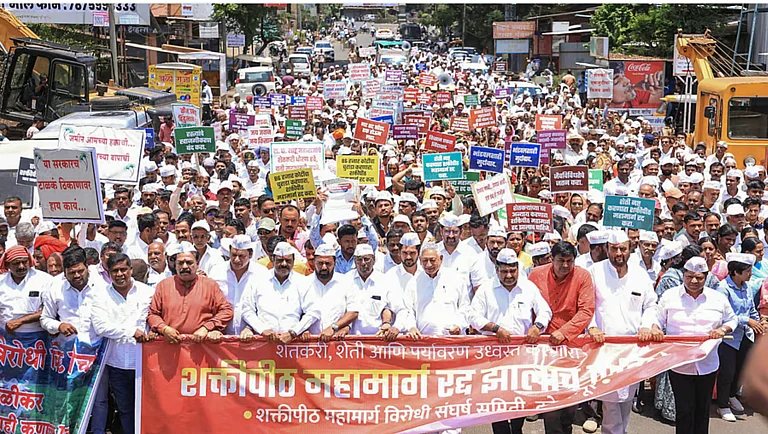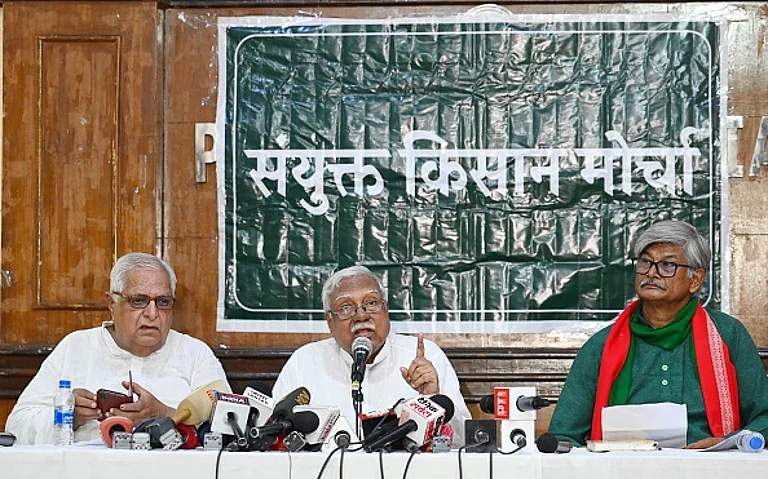
In 1943, Dalit labourers in Kuttanad broke free from bonded labour through a key strike led by V.S. Achuthanandan.
Though slavery ended in 1855, caste and debt kept Pulayas and Parayas tied to landlords.
Union efforts from 1940s helped end feudal practices and sparked Dalit assertion.
“There may be sharks and ray fish in the backwaters, but fearing them the small fish are not going to walk on land”. This was the metaphorical response of the Dalit attached labourers of the largely aquatic Kuttanad region, the rice bowl of Kerala, after their successful strike in 1943 in Kavalam under the leadership of V.S. Achuthanandan. He was the towering leader of Kerala’s left movement who passed away a couple of months ago.
This pivotal strike had liberated them from the clutches of attachment. Sharks and ray fish known as sravu and therandi respectively in Malayalam are predatory fishes, which gulp up small fish. The workers were referring to the some of the large-scale farmers of Kuttanad who lived in Kavalam. Even though capitalist investment had come into Kuttanad by the 1940s, the farmers retained the feudal system of attached labour, which ensured a cheap labour force for the labour-intensive tasks of punja cultivation practised in the area.
The attached labourers of Kuttanad belonged to the Dalit castes of Pulaya and Paraya who were agrestic slaves until the Travancore Slavery Abolition proclamation of 1855. Though the proclamation legally abolished slavery, it actually continued under the garb of attached labour. Purchase and sale of slaves declined, but the attached labourers still remained tied to the land of their masters. Living on homesteads owned by their masters, they attended to all the hard, unhealthy and dirty tasks of Punja cultivation, which demanded long hours of work standing in water and dealing with mud.
Men among them replenished and often rebuilt the bunds with mud collected from the river beds, in order to protect the paddy fields from being inundated with water from the rivers and lakes, which flowed by their side. They also drove out the water from the low-lying paddy fields with the water-wheels (chakrams). Diesel-based motorised pumps to drive out water had come in but the provision of electricity for pumping, which could economise on energy and labour costs, was only picking up gradually. Bund-making and replenishment were completely manual tasks, which had to be repeated at the start of every cultivation season. Pulaya and Paraya women were the mainstay of labour for transplanting, weeding and harvesting. Women by and large constituted a major chunk of the labour in paddy cultivation in the area. Their involvement in the workers union was also very substantive.
It was the casual labourers belonging to the OBC Ezhava caste, who first responded to the initiative of the Communist Party of Travancore towards the end of 1930s and around 1940 to unionise them. These casual labourers were daily wage workers, who were relatively free compared to the attached labourers. They were referred to as ‘Purathal’, meaning workers other than the Pulayas and Parayas who were the ‘Akathal’, which apparently meant the ‘inside men’ of the landlords. The nomenclature of Akathal was indeed very deceptive. Though they were supposedly permanent workers, they had to be at the beck and call of the landlords and were engaged on cheaper wages than the Ezhava casual labourers.
The landlords had complete authority on them, which stemmed from their feudal power, emerging from the ‘superior’ caste status they assumed coupled with their economic power as well as from the suppressed status of the Pulayas and the Parayas as slave-castes; though slavery was technically abolished in 1855. They had to keep vigil on the bunds against any breach even in the deep dark nights during the monsoons, when floodwaters often struck at these bunds.
Pulayas and Parayas were prevented from owning or leasing in land by caste-based custom. In 1909, in one of the articles, the Malayala Manorma advocates for providing land on lease to the Pulayas. However, the situation continued unchanged for several decades. Even though the Pulayas and Parayas lived on the homesteads allotted to them by the farmers, they did not enjoy ownership over them. They could be evicted on any flimsy reason. They were also physically assaulted for any perceived disobedience or negligence of duty. Apart from these, various other forms of caste based social discrimination against the Dalits, which were practised in 19th and early 20th century Kerala, were in practice in Kuttanad also. They were not allowed to walk on public pathways or enter village tea shops. They had to refer to themselves as Adiyan and call their employers Thampuran (Lord). Their rice was to be referred to as kallari (stone rice) and their money chempukashu (copper-coin). Only in the 1940s and 50s could their children get admitted to schools, though with the great displeasure of their masters.
In spite of all these, the attached labourers had unflinching loyalty to their masters as they lived on the tiny homesteads provided by the farmer-landlords and also due to the seeming security of permanent work and the loans of paddy the farmers provided in the lean season, though it only led to continued bondage. When the farmer gave the paddy loan, it was measured with the smaller measure called koolippara, while the workers had to repay in the bigger standard para. The loan was priced at the higher price of paddy of the lean season and repayment was priced at the lower price of the harvests. Dual measures and dual pricing were two of the methods used by farmers, to ensure their continued bondage.
Gyanpeeth Award-winning author from Kuttanad, Thakazhi Shivasankara Pillai, in his novel Randitangazhi (Two Seers of Grain) depicts the feudal agrarian relations that existed in Kuttanad till the 1940s. One of the elderly characters in the novel tells the younger one: “Thampurans (farmer-landlords) have killed Adiyar (slaves) and drowned their bodies in the river. It comes within their powers”. Even self-negating loyalty to the farmers was the hallmark of Pulayas and Parayas during this period. In his autobiography Ormayude Theerangalil, (On the Shores of Memory, Mathrubhumi Weekly, 1983), Thakazhi mentions that when his father who was a farmer suddenly stopped leasing in land for cultivation, his Pulaya worker who was unwilling to work under other farmers committed suicide.
Unionisation of agricultural workers in Kuttanad took place on the initiative of the trade union leaders of the coir factory workers of nearby Alleppey town from 1939-40. Kuttanad is the hinterland of Alleppey and as such, part of the working class of the town was also drawn from the villages of adjoining Kuttanad, which facilitated the spread of socialist ideology to Kuttanad when people were hit by the war-time inflation and food scarcity of the Second World War.
In 1942, the Deepika newspaper reported that famine conditions prevailed in Kuttanad then. An article in the newspaper brought out that if one went to the house of any farmer, he could see poor people seeking food. This was also the time when farmers had shifted to the payment of wages in cash from payment in kind in order to reap maximum benefit from the war-time increase in paddy prices. Farmers were also engaging in hoarding paddy and selling it only when it fetched the highest price. Workers as a whole, and agricultural workers in particular, were hard hit by this situation.
The Thiruvithamkoor Karshaka Thozhilali Union (TKTU), was registered as a trade union of agricultural workers in 1941. This was under the leadership of S.K. Das its General Secretary, who was also a lyricist. Songs depicting the economic and social exploitation of agricultural workers written by Das and various other writers were sung by the women workers while transplanting and weeding from 1940. The Ezhava women labourers who got attracted to the union, conducted the first strike for rise in wages at Kainakary near Alleppey in 1941. This was followed by another strike in 1942 during transplantation in multiple locations of Kainakary and neighbouring Kuttamangalam, Kuppappuram, Chennankari and Pallathuruthi. A consensus was reached only with the intervention of senior officials of Travancore administration.
However, the Pulaya and Paraya attached labourers, refused to join the union at the first instance. They were even used to beat up the leaders and workers who had joined the union by the large farmers. They considered the union leaders as those who were out to spoil their livelihood. It is only with the intensive efforts of a team of activists of the Communist Party of Travancore, led by V.S. Achuthanandan, that the Pulaya and Paraya attached labourers evinced interest to join the TKTU. Their first strike in Kavalam, the citadel of Kuttanad farmer-landlords, was the turning point. The key demand of the strike was that the union leaders wanted to examine the work accounts of the attached labourers maintained by the farmers.
On examination by the leaders, it was found that the work accounts were kept fraudulently in order to ensure continued bondage of the workers. It turned out that for the first time after the 1943 strike, the attached labourers could go home with a sizeable amount of paddy as annual balance of wages after the harvest. In the previous years, they always went home, taking another loan to tide over, and the cycle of debt and bondage continued. Similar strikes of attached labourers followed in various other places in Kuttanad also. The farmers now felt that it was no more economical to keep attached labourers as permanent workers. This led to the collapse of the attached labour system of Kuttanad. It also led to a new self-assertion by the Pulayas and Parayas who questioned the various forms of social discrimination that they were subjected to. Small fish were no longer frightened of the big fish.
As part of my research in 1984-85, I had interviewed V.S. Achuthanandan, S.K. Das and various other leaders of the agricultural labour movement of Kuttanad to supplement the information gathered from other sources. Achuthanandan was interviewed in Thiruvananthapuram when he was the State Secretary of the CPI (M). I still remember his concluding remarks at the close of the interview: “These are my observations. You are a researcher, you should come to your own conclusions”. It was indeed refreshing to hear these words, coming from a lifelong practitioner of struggles, to a then young researcher documenting and analysing them.























